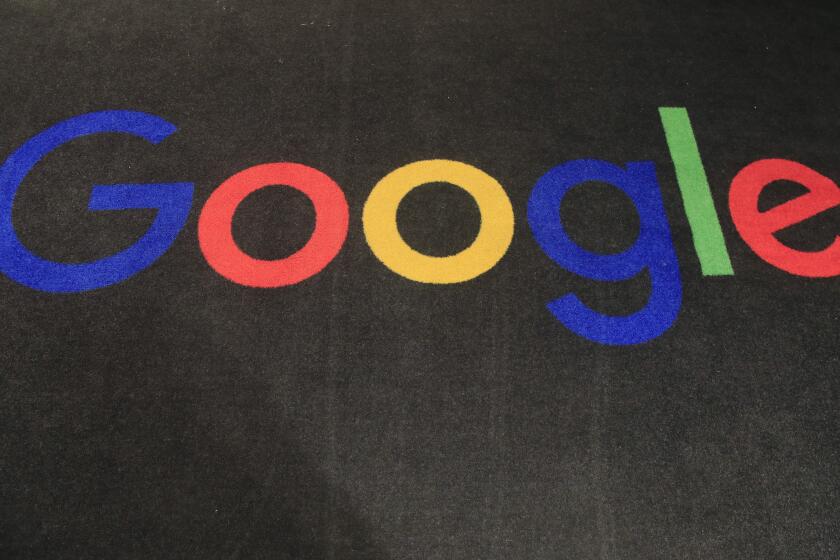Risky Move : Stock Pundit William O’Neil Gambles by Launching Mutual Fund
- Share via
Some of the biggest names on Wall Street pay $75,000 a year for his stock picks. More than 150,000 people have bought his book, “How To Make Money In Stocks.” About the same number read his newspaper, Investor’s Business Daily.
So when William J. O’Neil decided this year to launch his own stock mutual fund for small investors, it was somewhat akin to dropping a U.S. Mint printing press into his already cramped West Los Angeles offices.
O’Neil’s New USA fund, which will officially begin trading Thursday, has already attracted a stunning $170 million with just one month of marketing.
The fund’s reception is a sign of O’Neil’s icon status in the investment world--and of the public’s voracious, and perhaps dangerous, appetite for stocks today.
Both O’Neil and his new investors are taking an enormous gamble: Even as the fund gets off the ground, the stock market appears to be weakening, and many of the high-flying issues that O’Neil traditionally favors have plunged.
If the New USA fund is a bust, its investors could suffer huge losses. For the 59-year-old O’Neil, the risk involves much more than money. His entire empire--the stock research, the book, seminars and audio tapes, and the newspaper--is built on the perceived success of a stock-picking discipline he developed in the late 1970s.
Yet because O’Neil’s own finances are private, the public has never been able to track the master’s own performance with his system. With the New USA fund, the curtain will be lifted.
David Ryan, O’Neil’s 32-year-old protege, who will manage the fund with O’Neil, admits that “our reputation is really on the line. If we don’t do well, it’s going to be a black cloud over the entire organization.”
Oklahoma-born O’Neil has long been a cult figure on Wall Street. A father of four, he is soft-spoken yet intense. A Democrat “until Carter,” he disdains the Eastern establishment, relishes challenging popular opinion (especially if it comes from New York or Washington) and exhibits an almost evangelical fervor about the nation and the stock market.
He insists that everyone should own stocks and encourages all 650 of his employees to invest and/or trade.
“Bill believes in America and he believes in free enterprise,” says Alan MacGregor, who worked with O’Neil for 17 years before leaving to start his own money-management firm in 1990.
A business graduate of Southern Methodist University, O’Neil moved to Los Angeles in 1958 to become a stockbroker. His nose for hot stocks developed quickly: A bet he made on shares of Syntex Corp., the developer of the birth-control pill, paid off in a bonanza in 1963, and with $250,000 in profits, O’Neil founded his own investment firm, William O’Neil & Co.
From the start, O’Neil was fascinated with winning companies and winning stocks, and what distinguished them. In 1964, he created a computer database of the market, and soon launched a novel chart service that crammed tremendous detail about a company and its stock onto a single sheet of paper.
The O’Neil Database book, updated weekly, has since become a sort of Bible for more than 600 institutional investors nationwide. O’Neil’s computers sort through nearly 8,000 stocks each week to find 2,500 of the most promising issues. They are charted and then ranked in order of the fastest-rising industries at that moment.
The idea behind the O’Neil charts is to know all there is about a stock’s trading action, the company’s financial results and the type of shareholders who own it. The goal is to find those few companies, and thus stocks, that are on the verge of dramatic success--what O’Neil calls C-A-N S-L-I-M stocks.
The awkward acronym stands for the seven variables O’Neil counts as most important in evaluating a stock: Current earnings; Annual earnings gains; New products; Supply and demand; Leader or laggard performance; Institutional ownership; and Market direction.
O’Neil has touted C-A-N S-L-I-M as “a winning system in good times or bad” on Wall Street. It succeeds, he says, because it picks out the handful of American companies with the greatest potential at any given time, regardless of the economic backdrop.
“The real growth in the country is created by about 2% of the companies,” he says, and those are the only stocks he wants to own.
In 1977, O’Neil’s first C-A-N S-L-I-M stock was retailer Pic ‘N’ Save, which became one of the hottest stocks of the late ‘70s. O’Neil says he made a 20-fold gain on the shares. More recently, he is believed to have won big with such issues as biotech firm Amgen Inc. and software giant Microsoft.
While O’Neil has never disclosed the extent of his stock-generated wealth, no one doubts that he has made phenomenal sums (though his associates joke about his blue Mercedes, which needs a good paint job).
The best proof of O’Neil’s stock prowess is that he has sunk tens of millions of dollars into Investor’s Business Daily since 1984. O’Neil says only that his firm’s main stock account has grown 30% a year since 1977 and that he has funded his newspaper without debt.
Ryan, who O’Neil boasts “has probably employed (C-A-N S-L-I-M) as well as anybody ever did,” came to the firm in 1982 right out of UCLA, after hearing O’Neil at a stock seminar. He offered to work without pay. “I just wanted to learn what Bill was seeing in the market,” Ryan says.
By 1985, Ryan finished first in a monitored trading derby sponsored by Money Manager Verified Ratings of Beverly Hills. He repeated that in ’86 and ’87. Last year, he says his account was up 120%.
Impressive as the O’Neil/Ryan team’s numbers have been in recent years, however, the creation of the New USA fund has rattled an old skeleton in O’Neil’s closet: His last foray into public money management, the O’Neil Fund of the late 1960s.
The O’Neil Fund was one of the premier growth-stock mutual funds of its era, and recorded stunning gains for its investors in the bull market of 1966-’67.
But when the market crashed in 1968-’69, so did the fund. Worse, Bill O’Neil couldn’t put the pieces back together soon enough to appease his angry investors. By 1975 he gave up and sold the fund; by then it had shrunk to $6 million in assets from a peak of $49 million.
The temptation, of course, is to believe that history will repeat, and that the New USA fund is just the O’Neil Fund reincarnated. To be fair to O’Neil, the last 15 years suggest that he learned something from the previous 15.
O’Neil agrees that he got carried away in the growth-stock mania of the 1960s. He was creating thousands of new stock charts but was only beginning to understand them, he says. “We were buying phenomenal small companies that no one had ever seen before, but we bought too many small names. . . . We were growing too fast very early,” he says.
Worse, the illiquidity of those small stocks foiled any attempt to follow a rigid sell discipline when they began to crumble. They simply fell too quickly, O’Neil says.
Under the C-A-N S-L-I-M system that O’Neil developed in the late ‘70s, the sell decision became one of the key elements of his investment success. One of C-A-N S-L-I-M’s cardinal rules, for example, is to sell any stock that drops 7% to 8% from the purchase price. The idea is to stop a loser from becoming a disaster.
Even so, O’Neil admits that the New USA fund won’t adhere to that strict a selling rule. He and Ryan plan to keep it at least 50% invested in stocks at all times rather than try and trade market cycles in full. Because Wall Street is in “the latter phases of the bull market,” as he puts it, O’Neil appears to be fashioning a go-slow approach with the fund.
And perhaps most surprising of all to investors who might expect a quick payoff in New USA, O’Neil insists that any investor entering the fund should be content to sit through at least the next four bear markets. Or as Ryan says, “We’re telling people you get into this for five to 10 years.”
If New USA can ride out tough markets without a 1968-style cataclysm, O’Neil’s investors may indeed stay put. Yet, should the fund merely fail to beat the market for any stretch of time, O’Neil’s bigger problem may be that his vaunted stock-picking system will suffer a major indictment--potentially smearing the rest of his empire.
Of his last go-round with the public’s money, O’Neil simply says, “We’re a heck of a lot smarter than we were then.” He’d better be.
Readership on the Rebound Paid circulation for Investor’s Business Daily, the newspaper founded by William O’Neil, has begun to climb in recent months after a long stagnant period.
More to Read
Inside the business of entertainment
The Wide Shot brings you news, analysis and insights on everything from streaming wars to production — and what it all means for the future.
You may occasionally receive promotional content from the Los Angeles Times.










